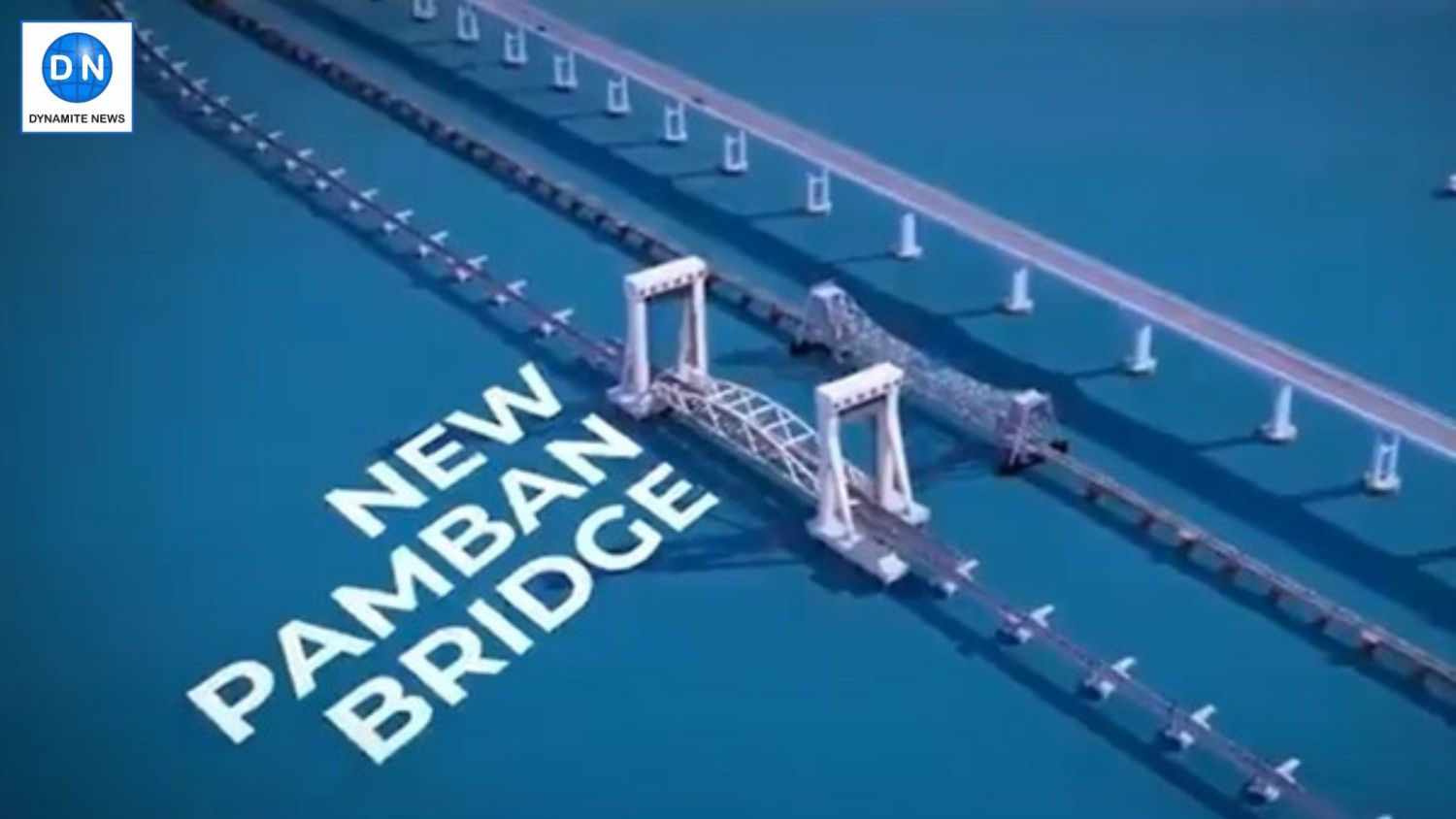Why India's First Vertical-Lift Pamban Railway Bridge Is an Engineering Marvel?
PM Modi opens India's first vertical-lift rail bridge (Pamban), replacing 1914 structure. New ₹535-cr marvel allows ships & 100kmph trains. Here’s all you need to know about the tale of India’s first sea bridge. Read more at Dynamite News

Tamil Nadu: On 6th April, the newly constructed Pamban Bridge was inaugurated by Prime Minister Narendra Modi, replacing the over-century-old structure that once connected Rameshwaram to the mainland.
The idea of linking India to Sri Lanka (then Ceylon) through the Adam’s Bridge route was first explored in 1876, but the plan was shelved due to high costs.
Eventually, in 1906, a more feasible plan was approved—a railway line from Madurai to Dhanushkodi via Rameshwaram, followed by a steamer service from Dhanushkodi to Sri Lanka.
The Pamban Bridge is India’s first sea bridge and an engineering marvel. Standing 12.5 meters above sea level, it stretches across 145 piers and features a double-leaf bascule span—a Scherzer rolling lift bridge that opens for ships to pass through.
This innovative design was patented by American engineer William Scherzer and built by Head, Wrightson & Co. of the UK. The project cost ₹70 lakh and took over two years (June 1911–December 1913) to complete.
It was officially inaugurated on 24th February 1914 by Neville Priestley of the South Indian Railway Company.
Also Read |
Five Tamil Nadu fishermen arrested by Sri Lankan navy
Passengers could travel by train to Dhanushkodi and then take a steamer/Ship/Boat to Talaimannar in Sri Lanka. In 1964, disaster struck—a devastating cyclone hit Dhanushkodi, a bustling town bordered by the Bay of Bengal and the Indian Ocean.
The cyclone swept away the entire town, including a train reportedly carrying 115 passengers. Huts were blown away, leaving only tales of sorrow, misery, and survivors' bravery.
The task of reconstruction was given to a young engineer, E. Sreedharan (later known as the ‘Metro Man’). He completed repairs in just six months.
Until 1988, the bridge remained the only surface link. Later, a road bridge was inaugurated by then-Prime Minister Rajiv Gandhi. Originally built for meter-gauge trains, the bridge was upgraded to broad gauge in 2007.
After over a century of service, the bridge was decommissioned in 2022 due to structural instability and corrosion. Construction of the new Pamban Bridge began in 2019, led by Rail Vikas Nigam Limited (RVNL).
COVID-19 disruptions, rough seas, and design modifications delayed progress, but work was finally completed in November 2024.
Also Read |
Tamil Nadu: Telangana CM offers prayers at Rameswaram temple
The new bridge is designed for high-speed trains (up to 98 km/h, compared to the old bridge’s 10 km/h limit) and features a fully automated vertical-lift span for smooth ship navigation.
Unlike the old manually operated system, the new design ensures minimal obstruction. Engineers used polysiloxane paint to protect the steel structure for 35+ years without repainting.
Prabhakar Rao (RVNL) stated that the lift-span design ensures a simply supported system with no marine traffic interference. Southern Railway officials confirmed that the old bridge will be dismantled, though parts will be preserved for posterity.
Built at a cost of ₹535 crore, the new Pamban Bridge marks a new chapter in Indian railway infrastructure.
 Dynamite News
Dynamite News 